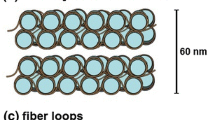Abstract
The average or amorphous track model uses the response of a system to gamma-rays and the radial distribution of dose about an ion’s path to describe survival and other cellular endpoints from proton, heavy ion, and neutron irradiation. This model has been used for over 30 years to successfully fit many radiobiology data sets. We review several extensions of this approach that address objections to the original model, and consider applications of interest in radiobiology and space radiation risk assessment. In the light of present views of important cellular targets, the role of target size as manifested through the relative contributions from ion-kill (intra-track) and gamma-kill (inter-track) remains a critical question in understanding the success of the amorphous track model. Several variations of the amorphous model are discussed, including ones that consider the radial distribution of event-sizes rather than average electron dose, damage clusters rather than multiple targets, and a role for repair or damage processing.
Similar content being viewed by others
Author information
Authors and Affiliations
Additional information
Received: 30 October 1998 / Accepted in revised form: 6 April 1999
Rights and permissions
About this article
Cite this article
Cucinotta, F., Nikjoo, H. & Goodhead, D. Applications of amorphous track models in radiation biology. Radiat Environ Biophys 38, 81–92 (1999). https://doi.org/10.1007/s004110050142
Issue Date:
DOI: https://doi.org/10.1007/s004110050142




